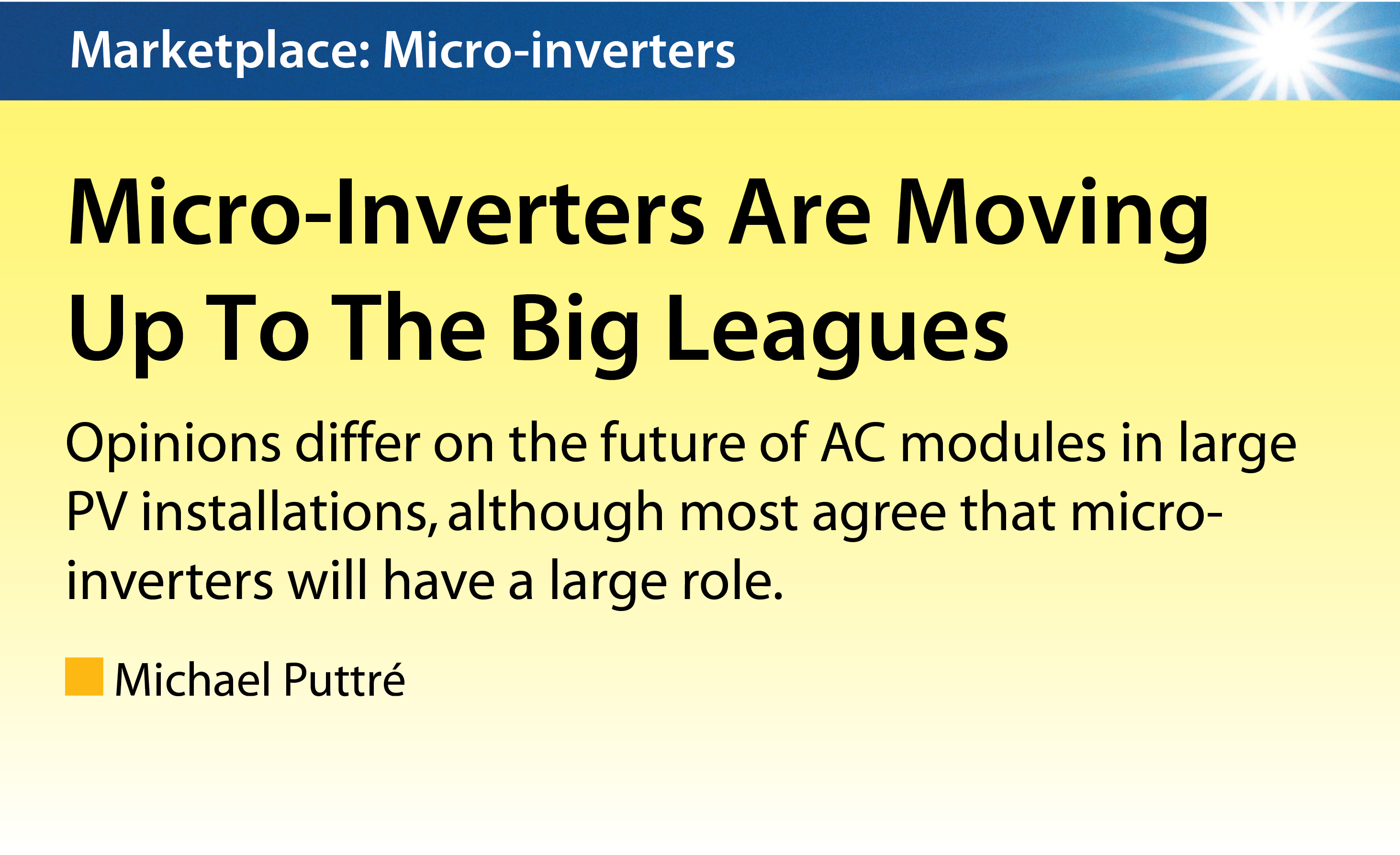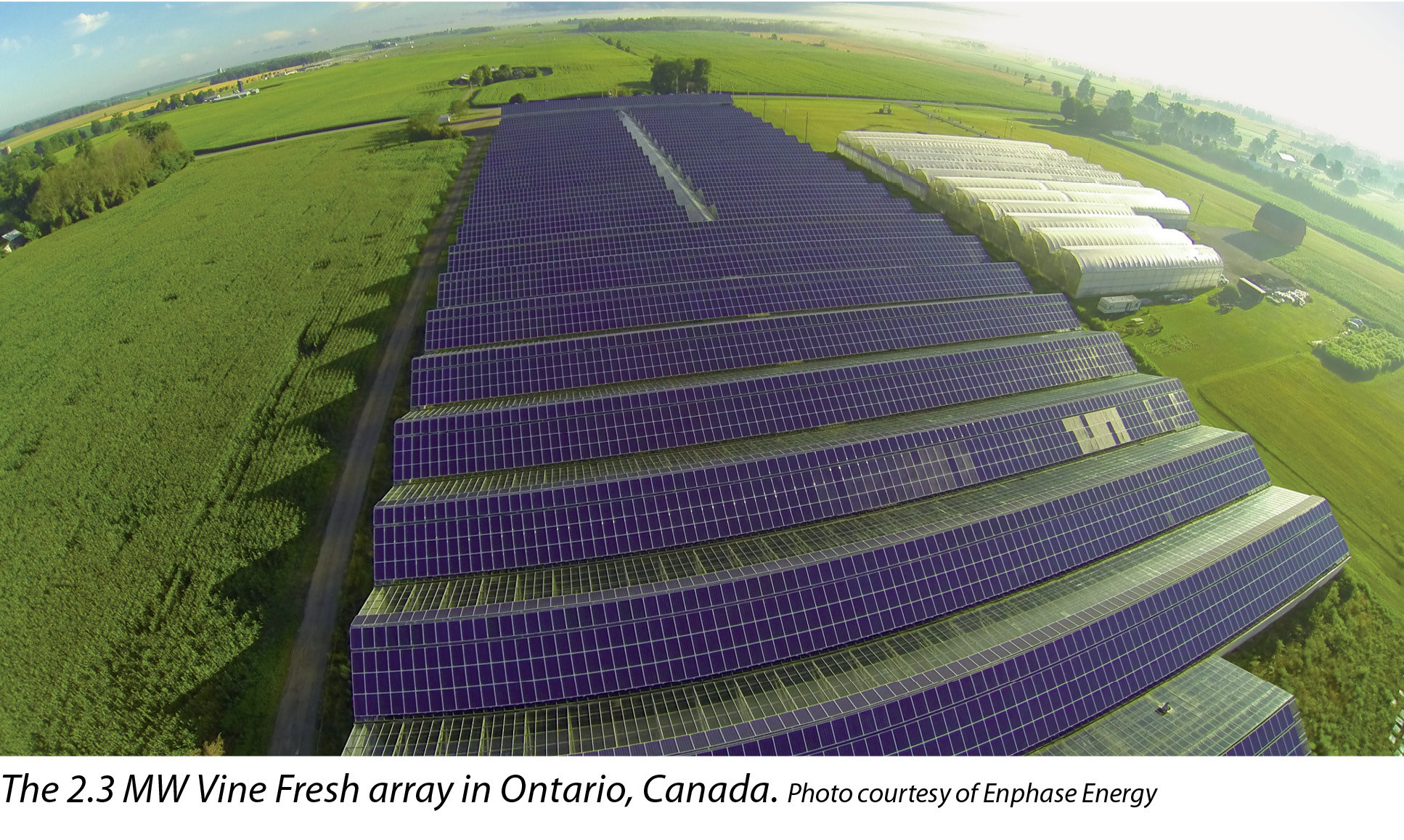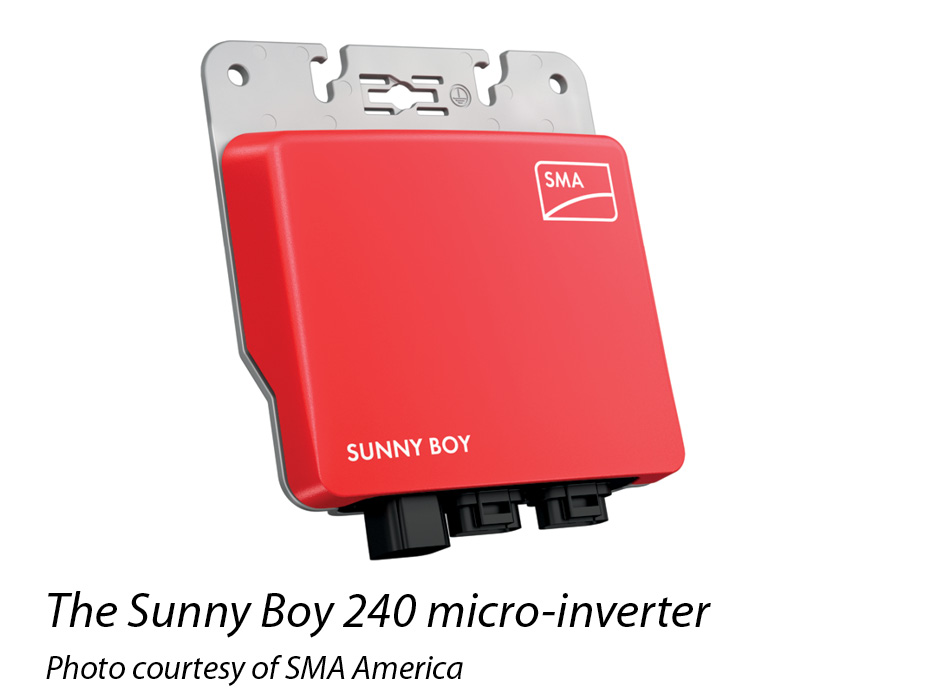

301 Moved Permanently
Last summer, Enphase Energy Inc. contributed over 9,000 of its M215 micro-inverters with JinkoSolar modules to a 2.3 MW solar project at Vine Fresh Produce Ltd. in Ontario, Canada, installed by Sentinel Solar. This large commercial installation represents a vision of the future where micro-inverters integrated into AC modules vie with string and central inverters.
According to a report from IHS, photovoltaic micro-inverter shipments worldwide are set to increase to 2.1 GW per year in 2017, up from around 500 MW in 2013. Shipments during the period are forecast to rise fourfold, expanding at a 306% rate, the report says. Although they are more costly than conventional inverters, micro-inverters can increase the energy harvest of a system compared to conventional string or central inverter devices, which convert power from multiple solar panels.
IHS says micro-inverters have already captured 40% of the U.S. residential market, and manufacturers are poised to expand into other regions and larger installations. Cormac Gilligan, PV market analyst at IHS, says the advantages of micro-inverters - including their higher energy yields, enhanced safety and module-level monitoring capabilities - are making them more attractive in commercial systems, especially in small-scale projects.
Focus on the module
The potential of the micro-inverter segment is drawing interest from established powers in the string and central inverter markets. In 2010, SMA Solar Technology AG acquired OKE Services and with it, the technology to develop its Sunny Boy 240 micro-inverter, which came to market last year. In April of last year, SMA America supplied its Sunny Boy inverters and Sunny Portal energy monitoring software for a 25 kW PV array at MA Tech Services, a business in St. Louis owned by the parents of Twitter founder Jack Dorsey. 
This is not to say SMA is abandoning its position in the other markets - far from it. Instead, the company maintains that the solar sector requires an “all of the above” approach.
“A micro-inverter fit into our lineup, considering a variety of criteria,” says Brad Dore, director of marketing for SMA America. “We believe that an integrator should use the right tool for the job. Unlike pure-play micro-inverter firms, we have the luxury of recommending the most cost-effective, technically advantageous solution rather than trying to make one product fit all uses. In many cases, this means using a micro-inverter, but in many others, a more effective solution is available. The installer’s business model, labor expertise, performance requirements and service considerations ultimately steer this discussion toward a final technology selection.”
By contrast, Enphase has pitched itself fully into the micro-inverter market with something on an evangelizing spirit. Raghu Belur, company co-founder and vice president, likens the current state of micro-inverters to the early years of the revolution in personal computers.
“Think of them in terms of building blocks,” Belur says of micro-inverters. “I don’t see any particular limitation to the technology in terms of the size of potential installations.”
In the early 1990s, data centers were still ruled by “big iron” mainframes, notably those from IBM. At the time, Big Blue was dealing with insurgencies launched by minicomputer manufacturers such as Digital Equipment Corp. and Prime, which envisioned “clusters” and networks of smaller, less centralized systems. Then everybody got blindsided by microcomputers, a.k.a. PCs.
Time will tell if the analogy applies. Belur is not willing to suggest a timetable for the penetration of micro-inverters into utility-scale installations.
“While there’s no technical limit to system size for micro-inverters, we believe they are most often effectively deployed in smaller or more complex residential settings,” SMA’s Dore says. “Typically, as system size increases, so does the sophistication of the integrators, who now have a greater understanding of the financial drivers impacting their business and who are more capable of maximizing profit through the use of string or central inverters. Our experience shows that these larger integrators have not made any appreciable use of micro-inverter technology in the commercial market.”
For the moment, Belur is content to point out the advantages of a modularized approach for PV installations. “With micro-inverters, you are maximizing power at the module level,” he says. “All issues are handled and processed at the module level.”
Belur says the elimination of single points of failure and improvements in AC power yield per module justify the added cost of a micro-inverter architecture. In order for this to fly, the analysis must take a lifetime cost of energy approach.
“With string inverters, you have the Christmas light problem,” he says, referring to the phenomenon where one bum bulb knocks out the string. By moving DC-to-AC conversion down to the module level, he says, the entire PV plant is now connected in parallel, so an inverter fault affects only one module.
In terms of operations and maintenance (O&M), Belur says losing an inverter is a non-event in a 2 MW PV plant with 10,000 modules. Moreover, failed individual micro-inverters can be swapped out during routine maintenance visits and do not require immediate intervention. With large central inverters, he notes, you have to service the unit right away if there is a fault. 
Arguably, micro-inverters can make O&M both easier and more difficult. Dore points out that module-level monitoring can identify problems quickly and that there is greater redundancy in a micro-inverter system. However, replacing micro-inverters is far more labor intensive, and there are 20 to 30 times more in a given system compared to a single string inverter - many more compared to a central inverter.
“If micro-inverters are deployed on a large scale - either in terms of a single project or a portfolio - the owners need to be confident in their ability to cost-effectively provide service, as well as in their micro-inverter partner’s ability to backstop the technology,” Dore says. “Micro-inverters are most cost-effectively used when their application fits an installer’s business model. Micro-inverters certainly allow for a very high degree of flexibility, but it comes at a cost. The higher upfront costs and greater service requirements need to be considered.”
Software-defined inverters
A fundamental aspect of Enphase’s drive for market share is its emphasis on bi-directional communications. All its micro-inverters are able to pass information back and forth over the powerline and onto a network through a gateway. While the opportunities this offers for monitoring are well established, Enphase is emphasizing its ability to control and update its products in the field. This not only has ramifications for product support, it opens up opportunities to provide O&M services.
Belur says the company has developed its products as “software-defined inverters.” The concept is akin to software-defined radios used by the military, wherein new capabilities and waveforms can be uploaded to the radio as software rather than requiring physical changes to hardware.
“We always think about events as software issues, not just hardware,” Belur says. “We can digitally alter the micro-inverter’s waveform. We can account for grid conditions, load conditions, weather conditions, ramp-rate requests. We can alter the behavior of all those functions through the network without requiring any changes in hardware.”
Currently, Enphase says it has 1 GW of information from 13,000 modules sent up to its lab. Other players see potential in this business. U.K.-based Enecsys Ltd. has introduced a new version of its micro-inverter that features a communications gateway and online monitoring service.
In the near future, Dore says micro-inverter technology will remain popular within the residential segment among integrators who utilize its value proposition most effectively. However, he points out that the proposed changes to California’s Rule 21 grid connection requirements could make existing string inverters with the required capabilities more valuable in the short term.
“Ultimately, SMA believes that there’s a space for micro, string and central inverter-based solutions, and we expect the market will continue to find appropriate uses for each,” he says. S
Marketplace: Micro-inverters
Micro-Inverters Are Moving Up To The Big Leagues
By Michael Puttré
Opinions differ on the future of AC modules in large PV installations, although most agree that micro-inverters will have a large role.
si body si body i si body bi si body b
si depbio
- si bullets
si sh
si subhead
pullquote
si first graph
si sh no rule
si last graph